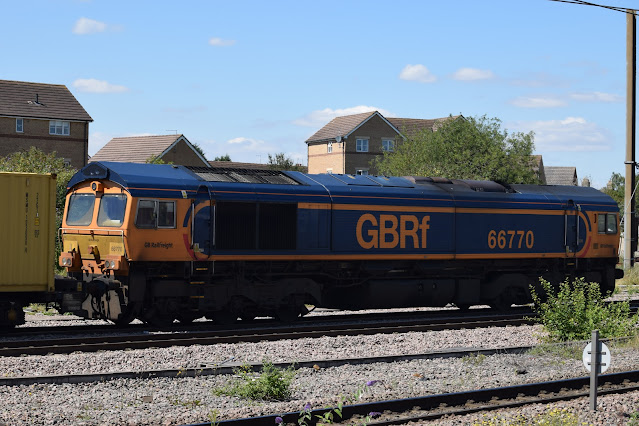I had never stood on Peterborough station before, though the girder bridge just south of the station was instantly recognisable from the numerous magazine photographs I’d seen over the years. All the original GNR buildings from 1850 have been removed during the various stages of modernisation, except for the Great Northern Hotel, opposite the station frontage and recently at the centre of a kerfuffle, locally, over the Government decision to use it for housing asylum seekers.
The island platforms, added to in number in recent years, seem
a little narrow and crowded, especially near the lifts and stairs. The ramps at
the northern end allow an alternative and more leisurely stroll between the platforms.
Although functional, the series of enclosed oblongs is a bit of an eyesore. As
the station is busy with travellers making connections, there is a constant
babble of audio information, and that’s even before any unexpected platform
alterations are announced. Nevertheless, that is all very helpful stuff when
the arrival of your connecting train is imminent. There are also customer information
help points - with real people in there, too, which all seems very positive.
Peterborough has become a good place to watch Class 66s in
action, but it was already a busy station before they arrived, as an important
junction for cross-country passenger services connecting with ECML expresses. As
the increasing number of shed-hauled freights often follow an east-west axis, the
north-south aligned ECML was consequently somewhat in the way.
Remodelling, including revised track layouts, made for easier high-speed passage for trains that don’t stop here, as well as accommodating those potentially troublesome freights carrying Felixtowe’s containerised imports to the West Midlands and the north west. The required increase in capacity led to major engineering works north of the city at Werrington Junction and new alignments on the west side of the station. The underpass to the south of the station takes traffic below the ECML in the direction of the East Anglian and Thames estuary ports.







No comments:
Post a Comment